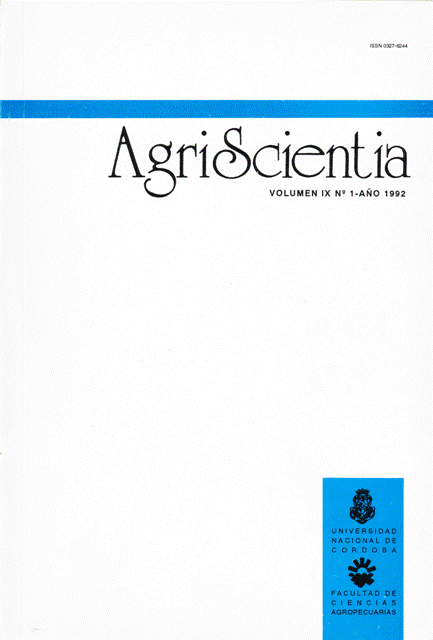Plant Eco-Physiology, its scientific structure, scope and projections
Main Article Content
Abstract
The purpose of this presentation is to discuss some ideas on scientific structure and the scope and projections of Ecophysiology. The topic is approached by asking three questions: 1) Does Ecophysiology provide actual interdisciplinary integration? 2) What is the scope of Ecophysiology? and 3) To which aspects of scientific research and current problems is Ecophysiology related. The first question leads to another: What do workers in the field of Ecophysiology expect from it? Several possible answers are discussed: a) the possibility to reduce theories, b) a feedback of questions, information, methodology, etc., c) a better position to understand concepts such as adaptation, competition, stress, or disturbance, and d) an explicit framework to identify questions that deal with the functioning and behavior of individuals and their inter- and intra-specific relations. The scope of Ecophysiology is discussed in terms of the levels of organization, from the metabolic to the molecular one. An inventory of the objects of this science and of its links to some current scientific and practical problems is analyzed.
Article Details

This work is licensed under a Creative Commons Attribution-ShareAlike 4.0 International License.
How to Cite
References
Aguiar, M. R., Paruelo, J. M., Golluscio, R. A., León, R. J. C., Burkart, S. E., & Pujol, G. (1988). The heterogeneity of vegetation in arid and semi-arid Patagonia: An analysis using AVHRR/NOAA satellite imagery. Annali di Botanica, 46, 103-114.
Casal, J. J., Mella, A. R., & Bailará, C. Control por el fitocromo de la rigidez, el contenido de lignina y la actividad de peroxidasa extracelular en epicotilos etiolados de haba. (inédito).
Huston, M., DeAngelis, D., & Post, W. (1988). New computers models unify ecological theory. BioScience, 38, 682-691.
McNaughton, S. J., Oesterheld, M., Franck, D. A., & Williams, K. J. (1989). Ecosystem-level patterns of primary productivity and herbivory in terrestrial habitats. Nature, 341, 142-144.
Minorsky, P. V., & Spanswick, R. M. (1989). Electrophysiological evidence for a role for calcium in temperature sensing by roots of cucumber seedlings. Plant, Cell and Environment, 12, 137-143.
Mooney, H. A. (1991). Plant physiological ecology - determinants of progress. Functional Ecology, 5, 127-135.
Steen, W. J. van der (1990). Interdisciplinary integration in biology: An overview. Acta Biotheretica, 38, 23-36.
Surowy, T. K., & Boyer, J. S. (1991). Low water potentials affect expression of genes encoding vegetative storage proteins and plasma membrane proton ATPase in soybean. Plant Molecular Biology, 16, 251-262.
Vitousek, P. M. (1990). Biological invasions and ecosystem processes: Towards an integration of population biology and ecosystem studies. Oikos, 57, 7-13.
Weber, B. H., Depew, D. J., Dyke, C., Salthe, S. N., Schneider, E. D., Ulanowicz, R. E., & Wicken, J. S. (1989). Evolution in thermodynamic perspective: An ecological approach. Biology and Philosophy, 4, 373-405.





